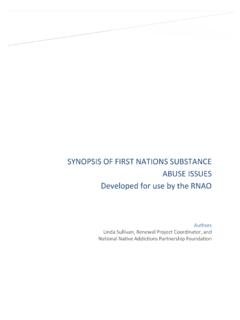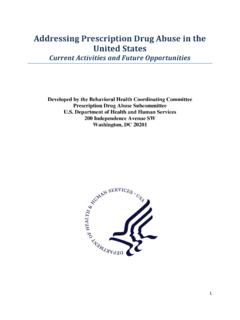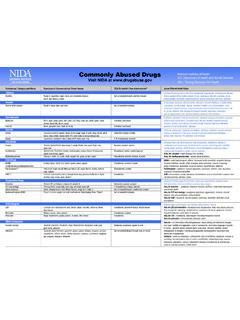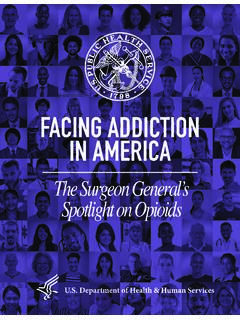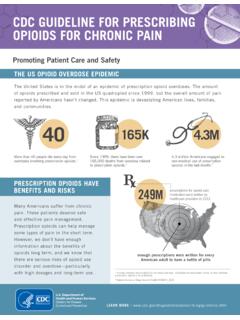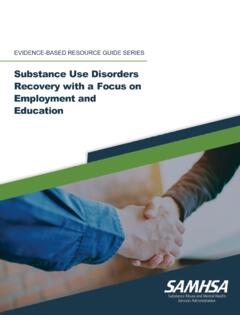Transcription of A GENDER PERSPECTIVE ON THE IMPACT OF DRUG USE, THE …
1 UN Task Force on Transnational Organized Crime and drug Trafficking as Threats to Security and Stability Policy Brief on GENDER and Drugs, UN Women 2014 A GENDER PERSPECTIVE ON THE IMPACT OF drug USE, THE drug TRADE, AND drug CONTROL REGIMES UN WOMEN POLICY BRIEF JULY 2014 PURPOSE This summary note outlines how the world drug problem and drug control regimes intersect with GENDER equality and women s empowerment. It is not comprehensive or prescriptive, but it is meant to inform the work of the UN System Task Force on Transnational Organized Crime and drug Trafficking as Threats to Security and Stability in its preparation for the 2016 Special Session of the UN General Assembly.
2 UN Women does not address the drug problem directly, either in its first Strategic Plan (2011-2013) nor its current one (2014-2017), but is a member of the task force and shares its main message that transnational organized crime, including drug trafficking, fuels violence, corruption, and income inequality, inhibits legitimate social and economic activity, poses a serious threat to public health and international peace and security, and undermines GENDER equality and women s empowerment. THE UNITED NATIONS AND THE WORLD drug PROBLEM The international drug control regime refers to efforts to protect human health and the welfare of populations by limiting the use and cultivation of controlled drugs, primarily coca, opium, and cannabis, and curbing the diversion of psychoactive pharmaceutical drugs for nonmedical purposes.
3 It is regulated by three international drug conventions, which are overseen by the Commission on Narcotic Drugs, the International Narcotics Control Board, and the UN Office on Drugs and Crime (UNODC). The General Assembly will devote a special session in 2016 to review the drug control regime, and the Security Council has held six thematic debates since 2009 on this issue. A majority of peacekeeping and special political missions have references to organized crime and drug trafficking in their mandates. The 57th session of the Commission on Narcotic Drugs, which took place in Vienna in March 2014, reviewed the implementation of the 2009 Political Declaration and Plan of Action.
4 Improvements in treatment delivery and reductions in the global cocaine market have been partly offset by increases in trafficking of other drugs, while the overall magnitude of drug demand has not substantially changed at the global level. Alarmingly, opium poppy cultivation reached record levels in Afghanistan last year, to name an example. West and East Africa, Central Asia, and the Americas are particularly affected by the drug trade and its negative repercussions. UN Women shares the main messages of the task force and the UN system s approach to the world drug problem: that an emphasis on security, criminal justice, and law enforcement have only yielded mixed results at substantial human security and financial cost; that a greater emphasis on the public health dimensions and the socioeconomic consequences of the problem is preferable.
5 That member states should avoid militarizing counter-trafficking measures and criminalizing the most vulnerable in the chain of drug production and drug trafficking, including the possibility of decriminalizing drug use and low-level, non-violent drug offenses; that eradication efforts will not succeed without alternative economic incentives for affected populations; that the world drug problem needs to be addressed, in sum, in a more balanced and humane way, prioritizing evidence-based, health-centered approaches focused on prevention, treatment, and social rehabilitation and integration, and addressing both supply and demand.
6 GENDER AND DRUGS Women s rights or GENDER equality rarely feature in discussions about the world drug problem. Men are, after all, a large majority of those using or trafficking drugs. Women s roles, both as participants and victims, are UN Task Force on Transnational Organized Crime and drug Trafficking as Threats to Security and Stability Policy Brief on GENDER and Drugs, UN Women 2014 underestimated and understudied. However, it is clear that the world drug problem is undermining GENDER equality, and that a GENDER PERSPECTIVE is needed in all efforts to prevent and respond to this issue.
7 For example, in the Northern Triangle in Central America (Honduras, El Salvador, and Guatemala), the drugs problem is mainly responsible for the skyrocketing levels of violence in those countries, with the highest homicide rates in the world. In Honduras, femicide has increased by 93 percent since 2009. This is directly linked to increasing levels of sexual violence and sex trafficking, and the humanitarian crisis provoked by tens of thousands of unaccompanied boys and girls trying to cross the US-Mexico border in 2013 and 2014. In Colombia, women in rural areas are mainly responsible for the food safety of their families, but the fumigation of coca crops affects other crops and water sources, while crop substitution programmes mainly benefit men, who are traditional title holders and often the sole beneficiaries of agricultural extension services, training, credit, and tools.
8 In Afghanistan, only 4 percent of female drugs users have access to treatment facilities, despite the high rates of opium and heroin use among women. As just one example of how drugs and violence against women are interrelated, in December 2013 an addicted husband cut the nose and lips of his wife in front of their children when she refused to give away her jewelry to exchange it for drugs. In 2009, the Commission on Narcotic Drugs requested greater collection and use of sex-disaggregated data and GENDER analysis, and UNODC s World drug Report features a number of GENDER -specific trends.
9 Other regional organizations in Europe and the Americas have addressed the GENDER dimensions of the world drug problem. These are some of the findings: Men are 2-3 times likelier than women to have used an illicit substance. Women are equally or more likely to have misused pharmaceutical drugs. The more advanced the country, the higher the proportion of females among drug users. For all drugs, the GENDER gap between males and females is lower among the young population than adults. Many of the public health effects of drugs are GENDER -specific.
10 For example, drug abuse is strongly correlated with unwanted pregnancies, poor birth outcomes, and child abuse or neglect. Between 2005 and 2010 in Europe and the Americas, women s lifetime use of tranquilizers and sedatives far exceeded men s (and tranquilizers have one of the highest rates of retention among prescription drugs). Women tend to develop the medical and social consequences of drug use faster than men, including having more difficulty quitting, and being more prone to restarting after quitting. Higher stigma faced by female drug users, and lack of GENDER -sensitive treatment facilities may lead to a deficit in women s access to treatment.










